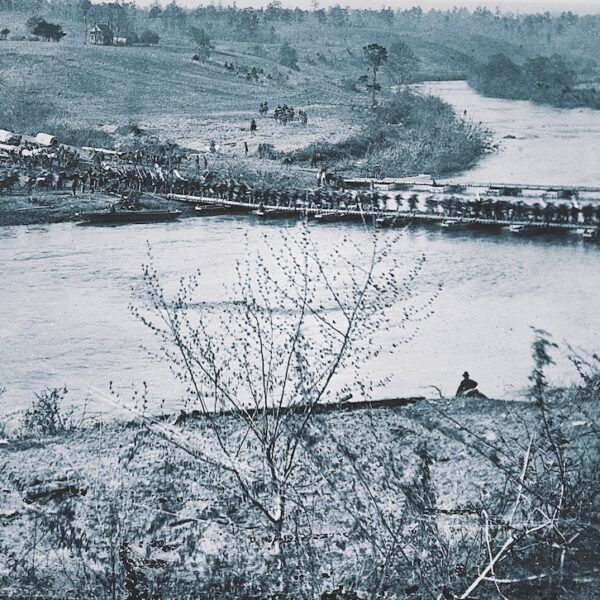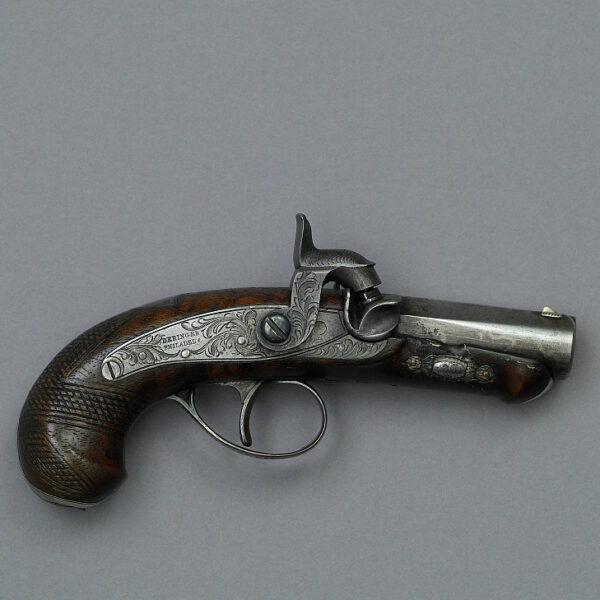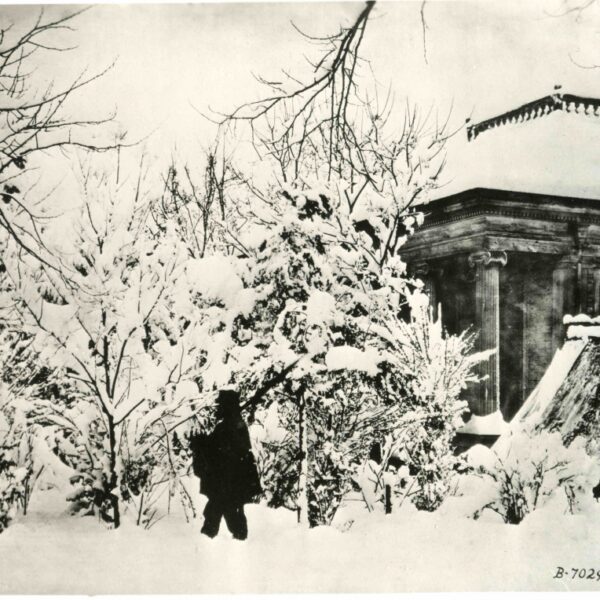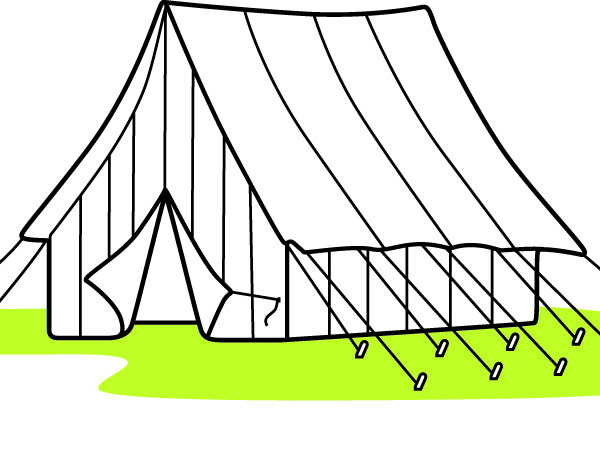“Mr. Brady has done something to bring home to us the terrible reality and earnestness of war. If he has not brought bodies and laid them in our dooryards and along the streets, he has done something very like it.” So wrote a correspondent for The New York Times after visiting Mathew Brady’s Manhattan gallery in October 1862 to view the famed photographer’s latest exhibit, “The Dead of Antietam.” The series of grisly images of the devastation wrought by the great battle, taken by Brady associate Alexander Gardner, attracted throngs of curious New Yorkers, drawn in by a “terrible fascination,” as the Times reporter observed. “You will see hushed, reverend groups standing around these weird copies of carnage,” his review noted, “bending down to look in the pale faces of the dead, chained by the strange spell that dwells in the dead men’s eyes.”
Below are some of the images, with descriptions from the original negatives, that Brady had on display in his studio. They serve as a grim reminder of what remains today as the bloodiest single day of combat in American history. (All images courtesy the Library of Congress.)
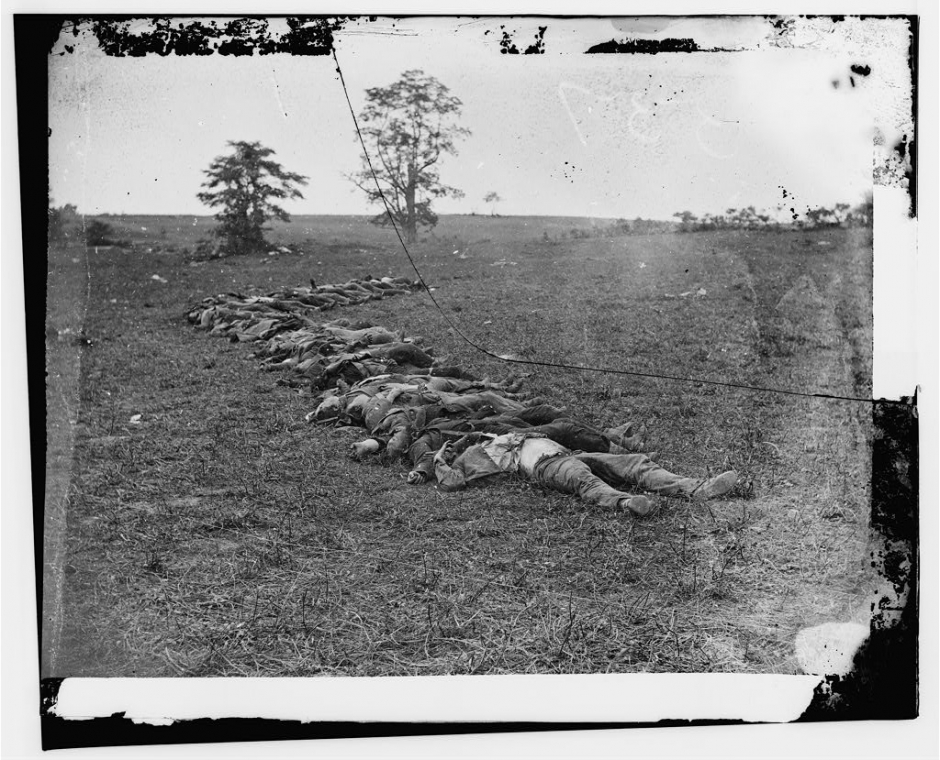
Bodies of Confederate dead gathered for burial
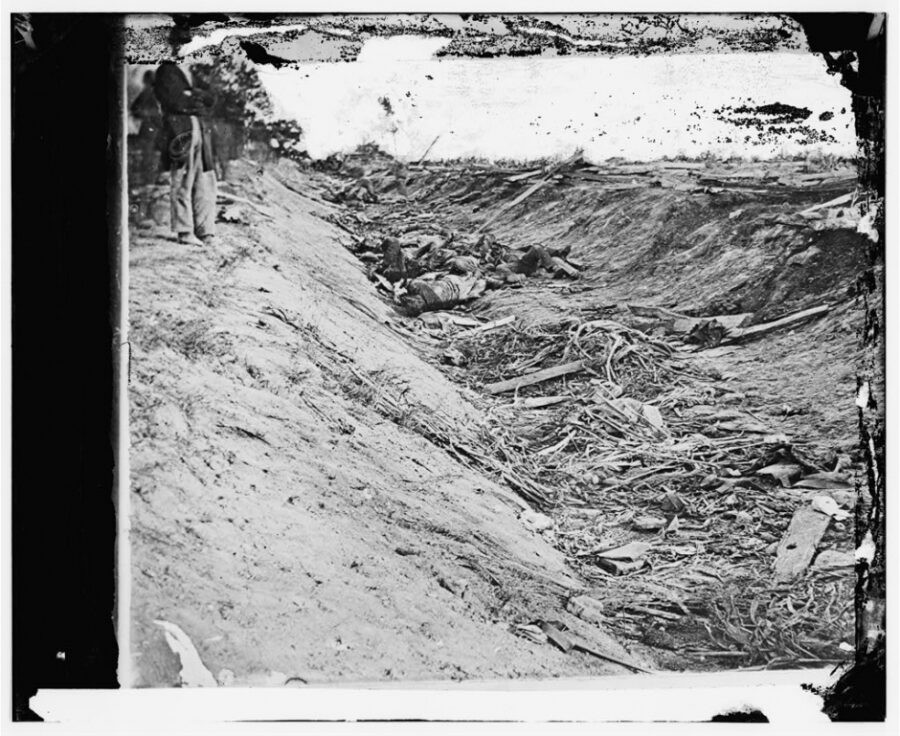
Confederate dead in a ditch on the right wing
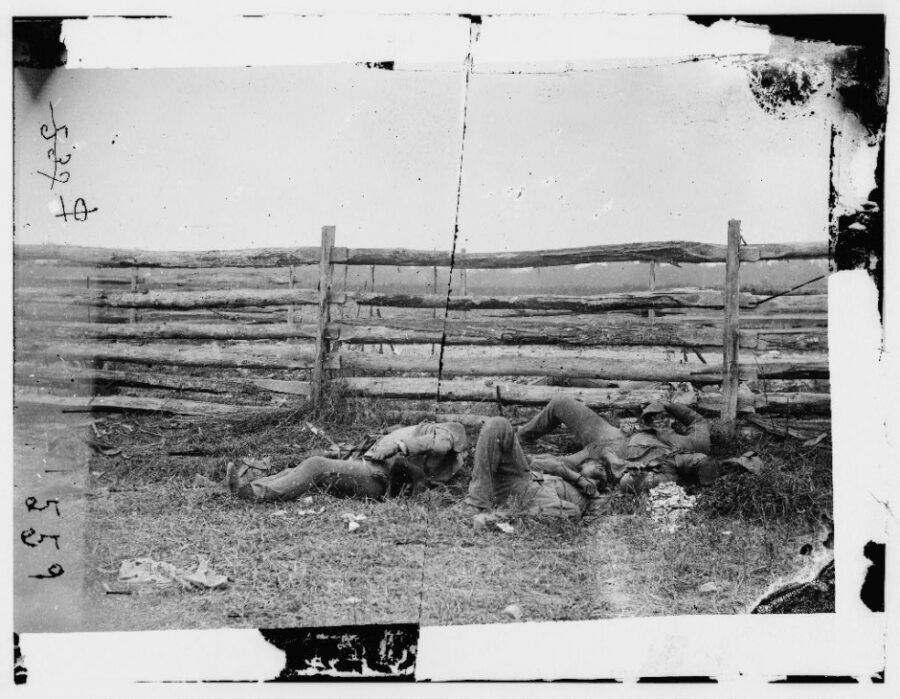
Dead of Stonewall Jackson’s Brigade by rail fence on the Hagerstown pike
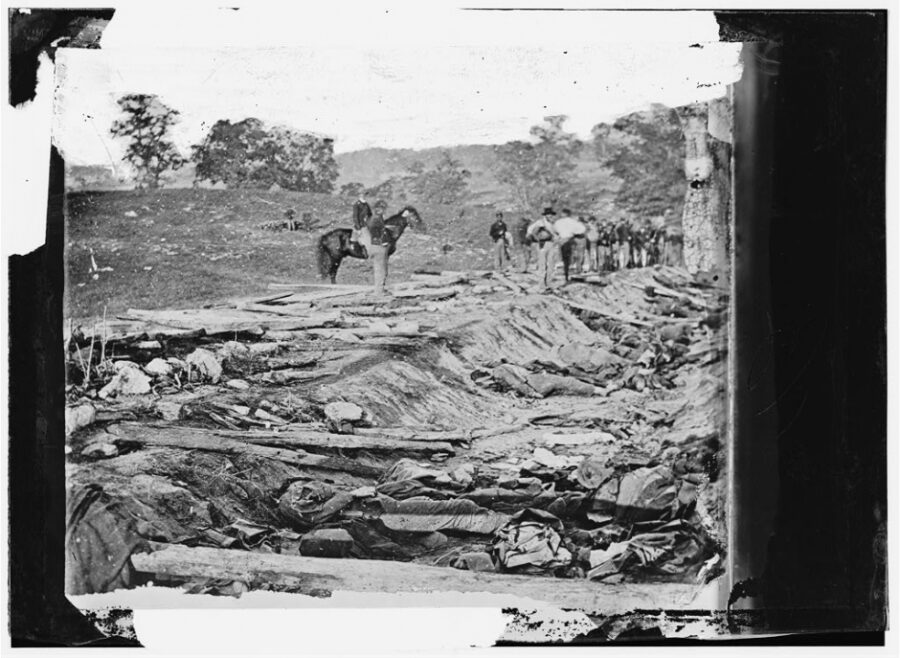
Ditch with bodies of soldiers on right wing used as a rifle pit by Confederates
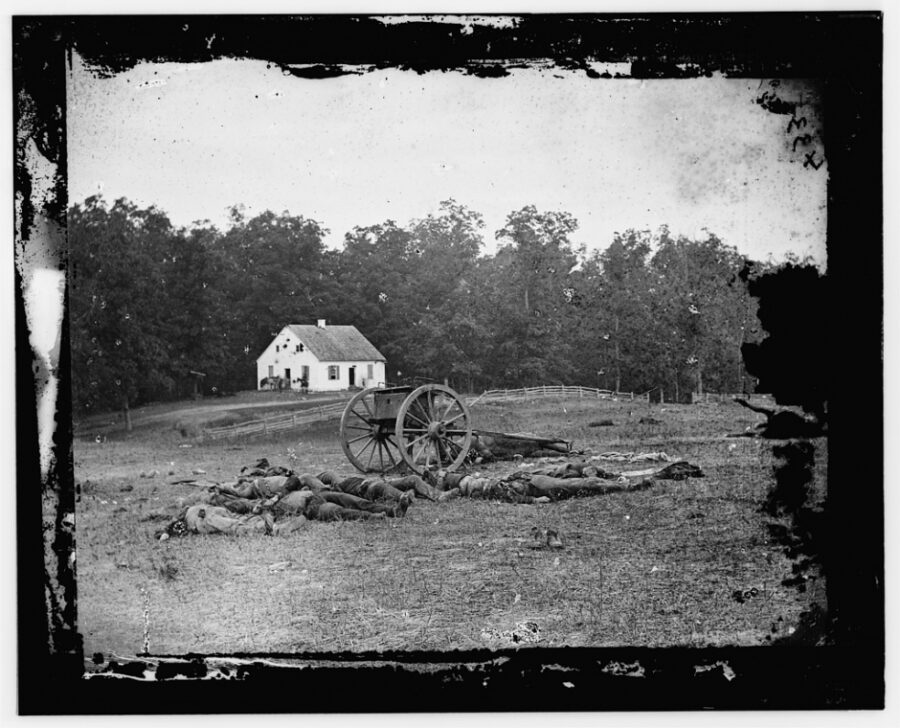
Dead in front of Dunker Church, Antietam, MD
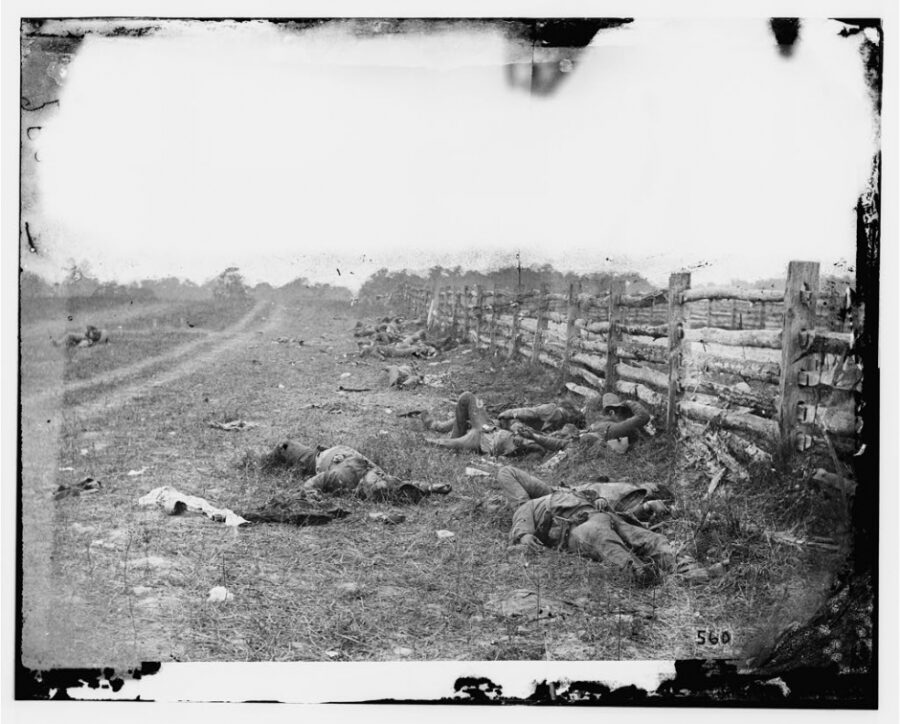
Confederate dead by a fence on the Hagerstown road
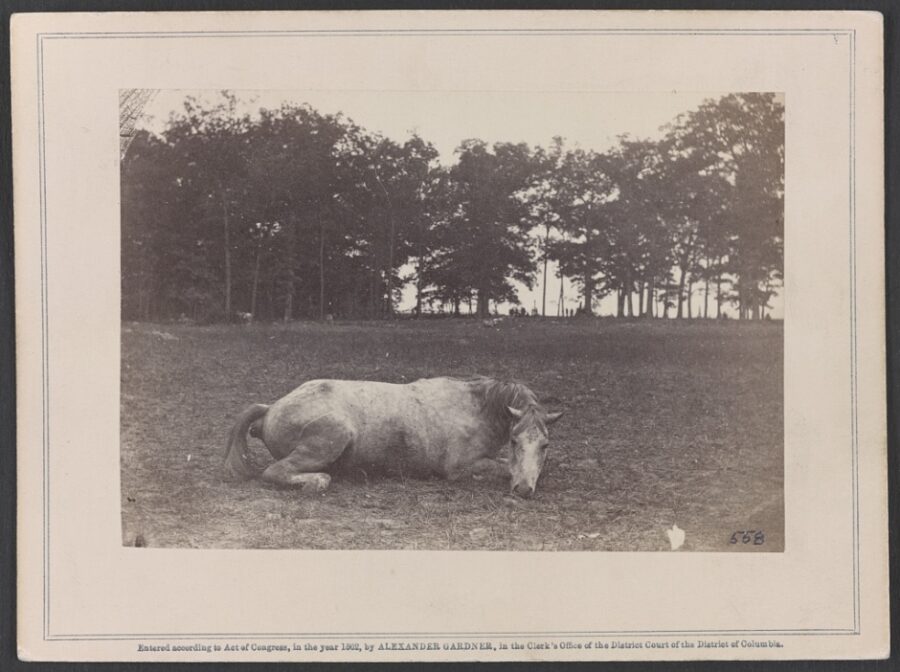
Confederate colonel and horse, both killed at the Battle of Antietam
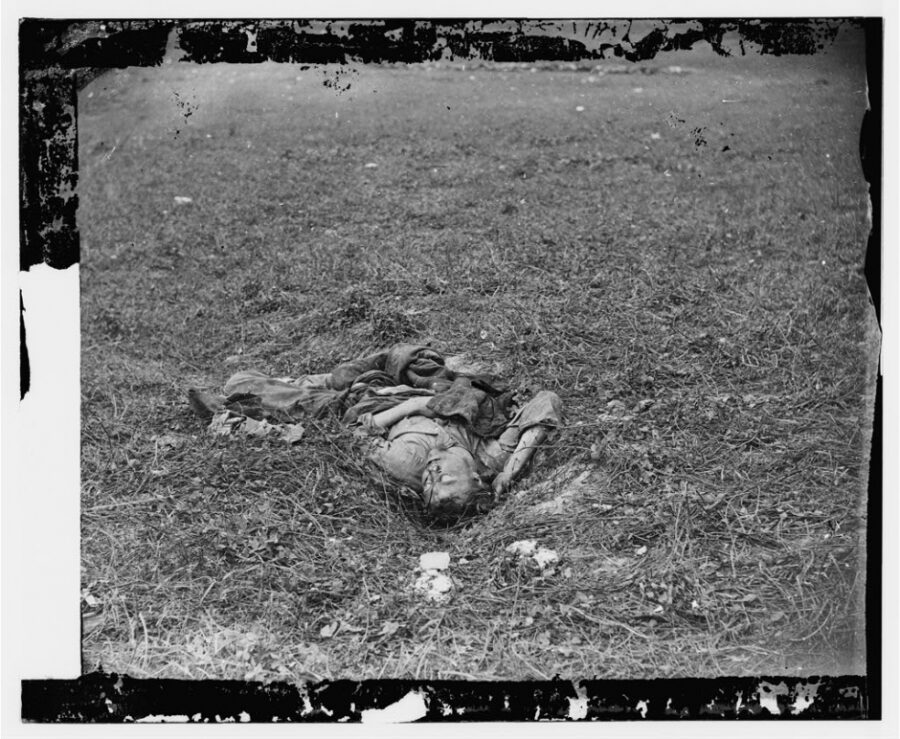
Confederate soldier, who, after being wounded, had dragged himself to a little ravine on the hill-side, where he died
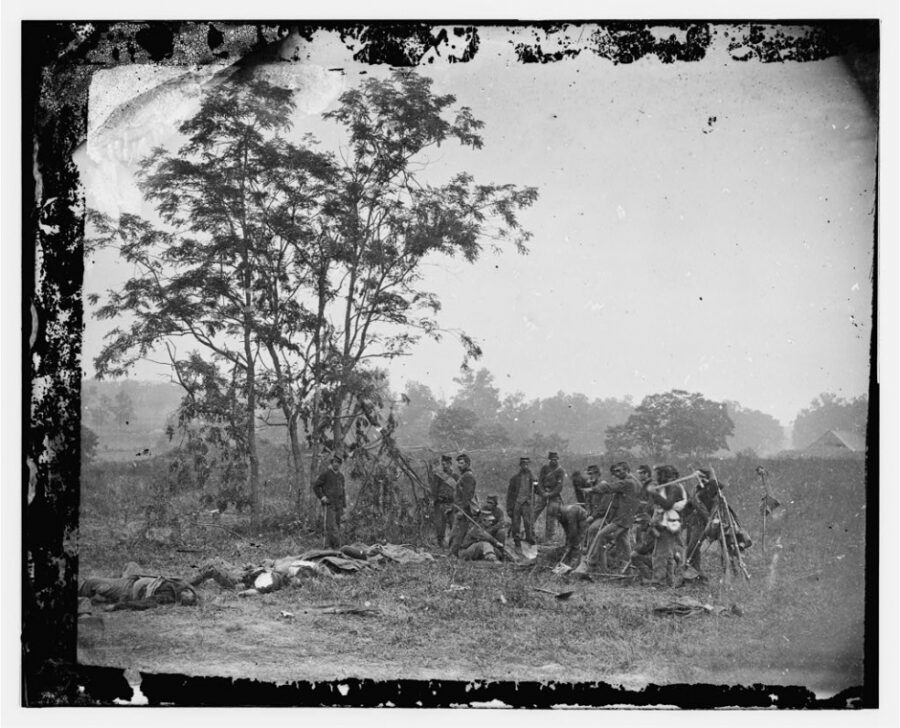
Burying the dead Confederate soldiers

